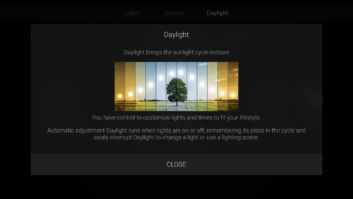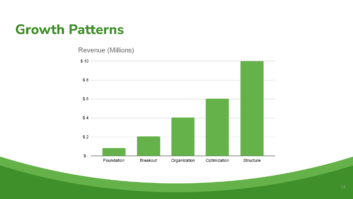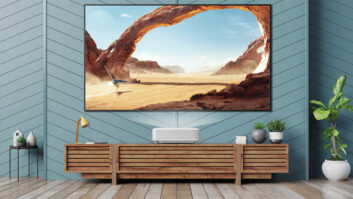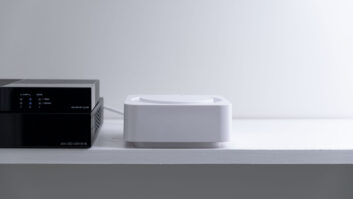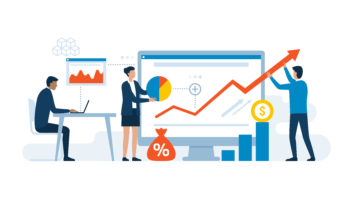by Ryan Arp
codesignapp.com
I think we all often find ourselves chasing a hundred different strategies, fifty different ideas, and maybe even more “opportunities”. The entrepreneur in us sometimes gets in the way of the things that really matter in creating a stable, scalable business. Here are 3 things that are really important right now to get right.
1. Simplicity in everything (from products to processes).
Why are internet sales killing you right now? It’s not necessarily because people enjoy buying online. It’s because e-commerce has removed so many of the barriers that hinder people from buying from you, how can you compete with that?
You: “Here is our price for x product. I can order it for you. No, we don’t match prices.”
Online: Here’s our price, plus the prices of our top 5 competitors.
You: “We’ll get back to you in a few days with a proposal.”
Online: Configure it the way you want. Add it all to the shopping cart. Free shipping!
You: “We carry x manufacturer because it’s the best.”
Online: Here are 5 brands in your price range. Compare their specs. Buy Now.
The point here is that the process of buying a product online is so convenient and simple, that there’s no possible way you can compete with it. And that’s okay. We’re all the same. We humans are almost always going to follow the path of least resistance. Complain about internet sales and prices all you want, but the first place you go to book a vacation now is online… not across town to the travel agent who takes 3 hours of your time trying to upsell you every option. So, what you should be doing is studying the processes of how your customers buy other similar items, and do everything you can to mimic that experience.
That’s one of the main reasons I created “pre-engineered” systems. It was the only way I knew that I could replicate the experience of buying something in the same price category. $15,000 for the Civic, $25,000 for the Accord, $45,000 for the Lexus. Now they get it. Want to go from cloth to leather? Add an upgrade for a fixed price. Will you customize it for them? Absolutely… after they picked the package and paid the deposit (because now they’re a client).
If you ever need help with this, look at Apple. The success of Apple has been as much about the simple buying experience as it has been the product itself. Limited selection and limited choices give less friction in the sales funnel. Would Apple have the same success with killer products but a site that boasts “we have 40 options to choose from”? Probably not. People would get stuck on option #2.
2. Personal identity (replacing brand identity).
For the last 10 years I’ve been trying to establish my business as a local/regional brand. With a fancy name, logo, marketing materials, and matching colors. All those things can be important. Especially if you’re trying to reach millions of customers. Mine is:
Enhanced Living Systems – Enhancing the way you work, live, and play.
You know how I actually get almost 100 percent of my business? Someone says: “Call Ryan, here’s his cell number.” I would give anything to have the hours back that I spent trying to create all that stuff.
Oddly enough it seems that builders, interior decorators, and designers may have known something we didn’t. Most of them use their own name as the business. Open any copy of the CEDIA awards showcase and look at the contributors to each project. I’ll be willing to bet that most of the builders and designers have their name in the business, yet we AV companies have something fancy. And I think we can all agree that we WISH we had the power that decorators have to spend their client’s money.
The web and social media have taken this and strapped it to a rocket. It doesn’t matter if you’re a large company of 20 or a small company of 2, someone (if not everyone) in your business needs to be utilizing their social networks to give your company a personality, not just a brand. Even the largest companies today have a person that stands as the real identity of the company. I think we can all agree we just recently lost the greatest personal identity of our time in Steve Jobs.
3. Focus.
This is something I’ve really struggled with. The ability to focus on a few things, and not do everything, sometimes goes against every natural bone in my body. And, some may argue that considering every option to bring in revenue is a good thing. With all the articles and webinars on “How to sell …” or “Making money with…” we start believing that if we add other disciplines to our business, then that much more money will come in. I disagree.
Let’s use a simple example from a website that sells a single product.
Let’s say you consistently have 1000 visitors a month to a site that sells a single product for $40, and you’re conversion rate is 1 percent. That means every month you’ll sell a quantity of 10 and your revenue is $400. Now, how do you double your income?
There are really only 3 ways in this scenario to double your income. One, double the number of visitors (or leads). Two, double the price of the product (sometimes a good idea). Or, three, double your conversions. Think about that in your head for a minute.
I think your natural inclination is to think, if I only had two products to sell instead of one. Or maybe even, if we only had more leads. But the truth is that the easiest way to double your income is to simply increase your conversion rate. Going from 1 percent to 2 percent conversion of 1000 visitors will perform the same as getting 2000 visitors and not improving your conversion rate above 1 percent. And you have to know that doubling your 1000 existing visitors is way harder than going from 1 percent to 2 percent on conversions.
Not to beat a dead horse here, but also adding a second product means that you’re doubling the products to manage, doubling the promotion, doubling the support, and doubling the knowledge required. And if your conversion rate is still 1 percent, you’ve actually gone backwards. You’ve doubled your overhead, but your revenue is still the same. It adds way more risk.
Now if you take that simple example and apply it to the scenario of a service-based business, you can easily see how doing everything for anybody will get you in trouble fast – and it definitely doesn’t increase your income (at least worth the risk).
So, before you consider taking on any new idea or “opportunity”, always focus every ounce of energy you have into converting more sales of your existing products first.
And, I guess the big question is “how do you increase your conversion rates?”
Well, you might consider codesignapp.com as a tool that helps you get an estimate in the client’s hand as soon as possible. You could go to businessofav.com and listen to other dealers tell their stories about what they’ve done to increase sales.
Regardless, you should at least go back and start working on numbers 1 and 2.
